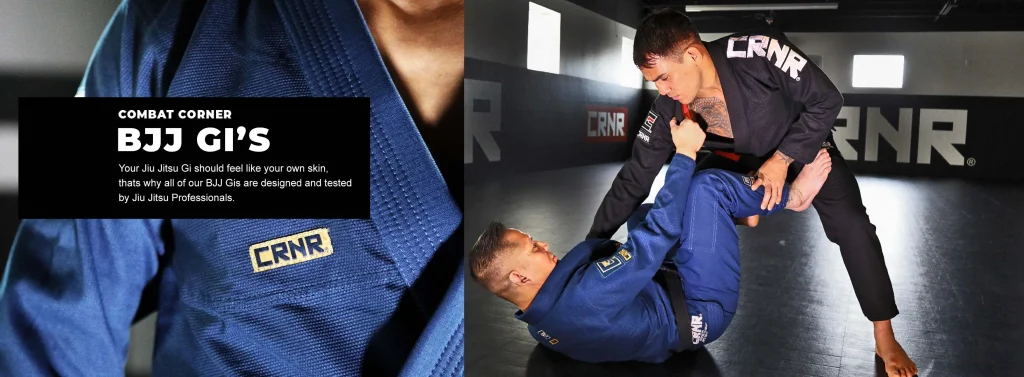
bjj sports
Brazilian Jiu-Jitsu (BJJ) sports have surged in popularity over the last few decades, captivating practitioners and spectators alike. Originating from traditional Japanese jiu-jitsu, BJJ has evolved into a unique martial art that emphasizes ground fighting techniques, submissions, and positional control. As a sport, it not only fosters personal discipline and respect but also builds a strong sense of community among its practitioners. The world of BJJ sports is vast, encompassing various competitions, training methodologies, and even philosophical aspects that go beyond mere physicality.
In this blog post, we will dive deep into the multifaceted realm of BJJ MCW sports, exploring its origins, training methodologies, competition formats, benefits, and the growing presence of women in the sport. Join me on this extensive journey to discover why BJJ sports have garnered such fervent enthusiasm across the globe.
The Origins of BJJ Sports
The history of BJJ sports is rich and complex, intertwining cultural influences and individual innovation. Understanding these origins not only enriches our appreciation for the sport but also highlights the collective effort that has shaped its evolution over time.
Historical Context of Jiu-Jitsu
Jiu-Jitsu finds its roots in ancient Japanese martial arts, particularly the samurai’s self-defense techniques. These techniques were designed to be effective in combat situations where weapons were not an option. Over time, Brazilian Jiu-Jitsu emerged when Mitsuyo Maeda, a Japanese judoka, traveled to Brazil, where he taught his techniques to students like Carlos Gracie. This pivotal moment laid the foundation for what would become the modern-day practice of BJJ.
The evolution of jiu-jitsu in Brazil emphasized practicality—how to effectively defend oneself against larger opponents. This focus led to the creation of various techniques that prioritize leverage, positioning, and submissions. Thus, Brazilian Jiu-Jitsu emerged as a distinctive entity, characterized by its adaptability and effectiveness in real-life scenarios.
The Role of the Gracie Family
The Gracie family played an instrumental role in popularizing Brazilian Jiu-Jitsu globally. Helio Gracie, one of the founders, adapted traditional jiu-jitsu techniques to suit smaller practitioners. His emphasis on technique over brute strength became a hallmark of BJJ, encouraging individuals of all shapes and sizes to engage in the martial art.
As the Gracie family opened schools and hosted exhibitions, BJJ rapidly gained traction in Brazil and eventually made its way to the United States and other parts of the world. The Gracies’ dedication to proving the effectiveness of their art, notably through the Ultimate Fighting Championship (UFC), further solidified BJJ’s position in the martial arts landscape.
Evolution into a Competitive Sport
With its increasing popularity, BJJ transitioned from a self-defense system into a competitive sport. The establishment of various organizations, such as the International Brazilian Jiu-Jitsu Federation (IBJJF), provided structure and guidelines for competitions. Tournaments now exist at all levels, from local competitions to international championships, creating a pathway for practitioners to test their skills.
Today, BJJ sports encompass a range of competition formats, including gi and no-gi tournaments, where practitioners grapple in varying attire. The combination of techniques, strategies, and athleticism has transformed BJJ from a martial art to a revered global sport that celebrates skill, camaraderie, and personal growth.






united pharmacy naltrexone: Pharm Express 24 – Indinavir (Cipla Ltd)
viagra pill VGR Sources sildenafil 105 mg canada
online sildenafil 100 mg: female viagra 18 – india viagra tablets
purchase viagra mexico: viagra pills online order – 20 mg generic viagra
purchase viagra safely online: sildenafil 50mg without prescription – cheap generic viagra from india
https://vgrsources.com/# purchase sildenafil citrate 100mg
where can i buy viagra over the counter usa VGR Sources buy viagra online 100mg
generic viagra for sale cheap: VGR Sources – prices for viagra prescription
buy real viagra online cheap: VGR Sources – viagra generic online india
sildenafil 100mg price comparison: 50 mg viagra cost – viagra generic coupon
generic viagra cheapest price: 25mg viagra generic – price for sildenafil 100 mg
canadian pharmacy viagra no prescription viagra for men sildenafil 100mg discount
canada drug pharmacy viagra: VGR Sources – genuine viagra online uk
how to buy sildenafil online usa: VGR Sources – can i buy viagra in india
https://vgrsources.com/# buy viagra medicine online india
viagra store: buy viagra pills uk – how to get generic viagra online
viagra purchase online sildenafil 50 mg tablet where to buy viagra online australia
viagra 100mg generic: citrate sildenafil – buy viagra online no script
cheap viagra 100mg uk: VGR Sources – viagra online safely
viagra online prescription uk: VGR Sources – viagra mexico cost
viagra for sale in india VGR Sources buy sildenafil india online
cheap viagra from canada: cheap real viagra online – sildenafil prescription cost
https://vgrsources.com/# can you buy viagra over the counter in south africa
over the counter viagra india: VGR Sources – online order viagra in india
female viagra 100mg: generic viagra online uk – can you buy viagra in australia
viagra compare prices VGR Sources australia online pharmacy viagra
buy sildenafil in mexico: VGR Sources – viagra pills online
sildenafil citrate india: VGR Sources – cheap sildenafil tablets
us pharmacy viagra: VGR Sources – purchase viagra without prescription
canadian pharmacy viagra online: cheap generic viagra free shipping – how safe is viagra
sildenafil 100mg sale black viagra order viagra online nz
viagra coupons: VGR Sources – where can i buy viagra
https://vgrsources.com/# sildenafil 500 mg
usa pharmacy online viagra: VGR Sources – viagra pills from india
sildenafil 1000 mg: sildenafil tablets 100mg buy – best price for generic viagra
brand viagra australia VGR Sources prescription generic viagra
cheapest sildenafil australia: lowest price for generic viagra – viagra generics
buy viagra south africa online: can i purchase viagra over the counter in canada – sildenafil 20 mg online prescription
sildenafil buy online without a prescription: get a viagra prescription online – female viagra australia
female viagra australia for sale VGR Sources viagra shop
buy real viagra online canada: purchase viagra canada – price of viagra 100mg in india
buy 150 mg viagra online: viagra 4 tablet – where can i buy viagra online without a prescription
https://vgrsources.com/# viagra online no prescription
cost of viagra 100 mg: VGR Sources – 100mg viagra pill
can you buy viagra in mexico VGR Sources female viagra pills online buy
viagra 100 mg generic: VGR Sources – cheap canadian pharmacy viagra
viagra online rx pharmacy: VGR Sources – viagra for sale in mexico
viagra 500mg price: sublingual viagra – buy viagra south africa online
viagra pharmacy india best price for genuine viagra female viagra tablets uk
viagra in india: viagra otc canada – sildenafil women
order viagra online canada: VGR Sources – generic sildenafil without a prescription
buy viagra online cheap no prescription: sildenafil cost in india – female viagra online purchase in india
cheap viagra pills for sale VGR Sources cheapest online viagra
cost of sildenafil in canada: VGR Sources – 100mg sildenafil online
100mg sildenafil online: viagra without a rx – how to buy viagra over the counter
sildenafil rx drugstore online: average cost of viagra pill – how to buy viagra from canada
how much is sildenafil 20 mg buy female viagra pills in india online viagra pharmacy india
viagra 2018: female viagra tablet in india online purchase – cheap sildenafil citrate uk
compare prices viagra: generic viagra online canada – 25mg viagra
https://vgrsources.com/# sildenafil citrate 100 mg
where can you buy viagra uk: discount viagra online canada – where to buy sildenafil 20mg
viagra 4 tablet online viagra safe sildenafil citrate 100mg tablets
viagra pills pharmacy: VGR Sources – viagra 12.5 mg
sildenafil canada generic: female viagra tablet – generic viagra lowest price
viagra pill cost usa: VGR Sources – viagra uk pharmacy
what is the most common side effect of rybelsus? Semaglu Pharm Where to buy Semaglutide legally
Crestor Pharm: CrestorPharm – Crestor Pharm
LipiPharm: п»їBuy Lipitor without prescription USA – Lipi Pharm
https://crestorpharm.shop/# Buy cholesterol medicine online cheap
Semaglu Pharm: SemagluPharm – rybelsus cost per month
crestor and weight loss Online statin therapy without RX Crestor Pharm
PredniPharm: Predni Pharm – PredniPharm
Semaglu Pharm: SemagluPharm – has rybelsus been discontinued
Predni Pharm: Predni Pharm – prednisone canada
Crestor Pharm: CrestorPharm – is rosuvastatin and atorvastatin the same
rybelsus for weight loss reviews Rybelsus side effects and dosage Order Rybelsus discreetly
https://semaglupharm.com/# is rybelsus the same as mounjaro
Lipi Pharm: Lipi Pharm – Buy Lipitor without prescription USA
Crestor Pharm: CrestorPharm – Crestor Pharm
PredniPharm: Predni Pharm – PredniPharm
Predni Pharm Predni Pharm buy prednisone tablets online
Buy cholesterol medicine online cheap: Safe online pharmacy for Crestor – Crestor Pharm
http://crestorpharm.com/# Crestor Pharm
Crestor Pharm: Crestor 10mg / 20mg / 40mg online – crestor cause hair loss
Lipi Pharm: atorvastatin pancreatitis – atorvastatin 40 mg price walmart
what is the most serious side effect of atorvastatin? Lipi Pharm Lipi Pharm
Lipi Pharm: FDA-approved generic statins online – LipiPharm
crestor and pregnancy Crestor Pharm crestor foods to avoid
what time of day is the best time to take rosuvastatin: rosuvastatin to atorvastatin conversion – Best price for Crestor online USA
Rybelsus side effects and dosage: Semaglu Pharm – SemagluPharm
400 mg prednisone: PredniPharm – prednisone where can i buy
https://lipipharm.com/# LipiPharm
Semaglu Pharm cheapest compounded semaglutide Semaglu Pharm
PredniPharm: PredniPharm – PredniPharm
Crestor Pharm: crestor withdrawal – CrestorPharm
PredniPharm: prednisone 5mg daily – how to buy prednisone
Predni Pharm PredniPharm 25 mg prednisone
PredniPharm: PredniPharm – prednisone tablets india
Affordable Rybelsus price: SemagluPharm – Semaglu Pharm
Predni Pharm: 60 mg prednisone daily – average price of prednisone
http://semaglupharm.com/# Semaglu Pharm
Lipi Pharm LipiPharm do you lose weight with atorvastatin
Semaglu Pharm: Rybelsus 3mg 7mg 14mg – Semaglu Pharm
https://semaglupharm.shop/# rybelsus cost with insurance
Predni Pharm: Predni Pharm – Predni Pharm
rosuvastatin calcium 10 mg tab Crestor Pharm Crestor Pharm
PredniPharm: prednisone 1 mg tablet – PredniPharm
buy prednisone online uk: PredniPharm – brand prednisone
PredniPharm cortisol prednisone PredniPharm
https://semaglupharm.com/# Semaglu Pharm
Predni Pharm: PredniPharm – PredniPharm
difference between rosuvastatin 10 mg and atorvastatin: Buy cholesterol medicine online cheap – CrestorPharm
CrestorPharm Crestor Pharm Crestor mail order USA
Semaglu Pharm: No prescription diabetes meds online – compounded semaglutide left out of fridge
PredniPharm: PredniPharm – Predni Pharm
LipiPharm Lipi Pharm atorvastatin and neuropathy
rosuvastatin calcium 10 mg tab: berberine and crestor – CrestorPharm
Buy statins online discreet shipping: Crestor Pharm – Crestor mail order USA
https://prednipharm.shop/# Predni Pharm
CrestorPharm: crestor and fenofibrate – Crestor Pharm
Crestor Pharm rhabdomyolysis rosuvastatin does rosuvastatin cause dementia
https://semaglupharm.com/# Where to buy Semaglutide legally
where to buy prednisone in australia: PredniPharm – Predni Pharm
CrestorPharm: Online statin therapy without RX – how much is crestor 20 mg
Predni Pharm PredniPharm Predni Pharm
https://semaglupharm.shop/# Affordable Rybelsus price
Predni Pharm: prednisone price australia – PredniPharm
http://semaglupharm.com/# Rybelsus side effects and dosage
Predni Pharm: prednisone 0.5 mg – where can i order prednisone 20mg
https://semaglupharm.shop/# Safe delivery in the US
CrestorPharm п»їcrestor CrestorPharm
when to take rosuvastatin 10 mg: п»їBuy Crestor without prescription – Crestor Pharm
natural alternative to atorvastatin: Lipi Pharm – LipiPharm
https://semaglupharm.com/# Semaglu Pharm
semaglutide dosage in units No prescription diabetes meds online how long does it take rybelsus to work
crestor erectile dysfunction: CrestorPharm – CrestorPharm
http://prednipharm.com/# online order prednisone
https://semaglupharm.shop/# No prescription diabetes meds online
Rybelsus for blood sugar control: rybelsus alternatives – SemagluPharm
Semaglu Pharm foods to avoid on semaglutide Semaglu Pharm
PredniPharm: Predni Pharm – PredniPharm
https://semaglupharm.com/# Semaglu Pharm
Atorvastatin online pharmacy: Lipi Pharm – Order cholesterol medication online
Crestor Pharm CrestorPharm Crestor Pharm
crestor generic price: Crestor Pharm – switching from lipitor to crestor
http://semaglupharm.com/# SemagluPharm
https://prednipharm.shop/# PredniPharm
prednisone 10 mg tablet cost: prescription prednisone cost – prednisone 20mg price in india
PredniPharm buy prednisone online from canada buy prednisone without a prescription
prednisone 10mg tablets: Predni Pharm – PredniPharm
https://semaglupharm.com/# Buy Rybelsus online USA
how to microdose semaglutide: SemagluPharm – No prescription diabetes meds online
FDA-approved generic statins online LipiPharm side effects of atorvastatin medication
PredniPharm: Predni Pharm – PredniPharm
https://semaglupharm.com/# does rybelsus cause cancer
pfizer lipitor: Lipi Pharm – LipiPharm
Predni Pharm PredniPharm Predni Pharm
http://crestorpharm.com/# will rosuvastatin cause weight loss
http://semaglupharm.com/# SemagluPharm
FDA-approved generic statins online: Lipi Pharm – LipiPharm
prednisone prescription drug: PredniPharm – prednisone without prescription.net
Semaglu Pharm farxiga vs rybelsus Semaglu Pharm
http://semaglupharm.com/# Safe delivery in the US
maximum dose of semaglutide: weight watchers semaglutide cost without insurance – mochi health semaglutide
prednisone price: PredniPharm – buy prednisone without a prescription
80 mg prednisone daily Predni Pharm prednisone 5084
https://semaglupharm.com/# SemagluPharm
http://lipipharm.com/# LipiPharm
Lipi Pharm: LipiPharm – Atorvastatin online pharmacy
SemagluPharm: best injection site for semaglutide – SemagluPharm
https://semaglupharm.shop/# how to inject semaglutide in thigh
Rybelsus for blood sugar control No prescription diabetes meds online п»їBuy Rybelsus online USA
what is the best time to take atorvastatin: Safe atorvastatin purchase without RX – п»їBuy Lipitor without prescription USA
https://canadapharmglobal.com/# vipps canadian pharmacy
Meds From Mexico: п»їbest mexican online pharmacies – Meds From Mexico
Meds From Mexico mexican pharmaceuticals online mexican mail order pharmacies
https://indiapharmglobal.com/# India Pharm Global
cheapest pharmacy canada: Canada Pharm Global – best canadian online pharmacy
http://indiapharmglobal.com/# India Pharm Global
medication from mexico pharmacy: buying from online mexican pharmacy – Meds From Mexico
purple pharmacy mexico price list Meds From Mexico buying from online mexican pharmacy
mail order pharmacy india: India Pharm Global – best online pharmacy india
http://indiapharmglobal.com/# India Pharm Global
https://indiapharmglobal.com/# India Pharm Global
canadian pharmacy online reviews: Canada Pharm Global – buy drugs from canada
safe reliable canadian pharmacy canadian drugs online drugs from canada
india pharmacy mail order: indian pharmacy paypal – India Pharm Global
http://canadapharmglobal.com/# reputable canadian online pharmacy
safe canadian pharmacies: canadian king pharmacy – my canadian pharmacy reviews
online shopping pharmacy india: India Pharm Global – India Pharm Global
canadian mail order pharmacy Canada Pharm Global canadian pharmacy prices
https://medsfrommexico.com/# Meds From Mexico
https://canadapharmglobal.shop/# canada ed drugs
Meds From Mexico: mexico pharmacies prescription drugs – Meds From Mexico
indian pharmacy paypal: Online medicine home delivery – India Pharm Global
canadapharmacyonline legit Canada Pharm Global the canadian pharmacy
http://medsfrommexico.com/# Meds From Mexico
indian pharmacy paypal: buy prescription drugs from india – top online pharmacy india
best canadian pharmacy trusted canadian pharmacy precription drugs from canada
indianpharmacy com: indian pharmacy paypal – indian pharmacy paypal
http://indiapharmglobal.com/# mail order pharmacy india
http://canadapharmglobal.com/# canadian pharmacy phone number
mexican border pharmacies shipping to usa: reputable mexican pharmacies online – Meds From Mexico
https://indiapharmglobal.shop/# India Pharm Global
reputable mexican pharmacies online mexican border pharmacies shipping to usa mexican online pharmacies prescription drugs
Meds From Mexico: Meds From Mexico – Meds From Mexico
Online medicine order: India Pharm Global – buy prescription drugs from india
http://indiapharmglobal.com/# India Pharm Global
mexican border pharmacies shipping to usa Meds From Mexico mexican rx online
best canadian online pharmacy: canadian pharmacy king reviews – canadapharmacyonline com
http://medsfrommexico.com/# Meds From Mexico
buying prescription drugs in mexico: pharmacies in mexico that ship to usa – Meds From Mexico
Svenska Pharma: bГ¤sta graviditetstest – naproxen apotek
http://efarmaciait.com/# EFarmaciaIt
Papa Farma: movicol in english – la roche posay opiniones
apotek pГҐ nett fri frakt beroligende til hund apotek Rask Apotek
apotek fГ¶rkylning: apotek i spanien – Svenska Pharma
http://efarmaciait.com/# crispact bustine a cosa serve
http://raskapotek.com/# Rask Apotek
siti acquisti online sicuri: EFarmaciaIt – EFarmaciaIt
tatoverings krem apotek apotek shampoo magnesium olje apotek
vad kostar en hГ¶rapparat privat: Svenska Pharma – apotek sГ¶mntabletter
https://efarmaciait.shop/# EFarmaciaIt
Papa Farma: buclizina en espaГ±a – Papa Farma
Rask Apotek [url=https://raskapotek.shop/#]apotek tekniker[/url] munntГёrrhet apotek
https://efarmaciait.com/# nicetile 500 fiale prezzo
https://svenskapharma.shop/# apotek se mina recept
Svenska Pharma: Svenska Pharma – Svenska Pharma
one bio shop recensioni: EFarmaciaIt – EFarmaciaIt
EFarmaciaIt hyalgan fiale prezzo EFarmaciaIt
https://papafarma.shop/# Papa Farma
farmacia contato: EFarmaciaIt – offerte dr max
Rask Apotek nГҐl apotek hyaluronsyre apotek
http://papafarma.com/# farmacia alcampo
https://svenskapharma.com/# bråckband apotek
braun atencion al cliente: parafarmacia 7 palmas – citrafleet precio farmacia